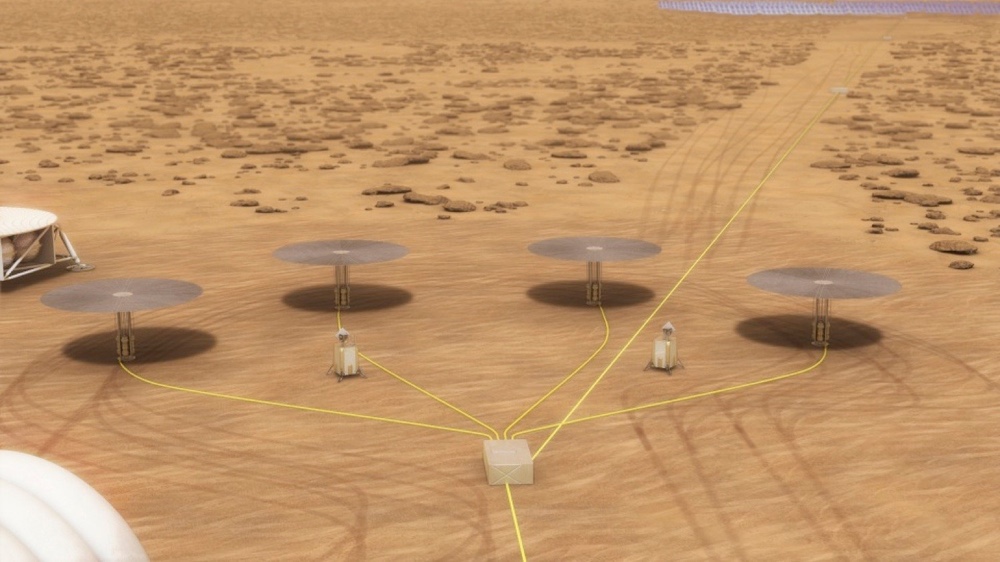ORLANDO, Fla. — While Elon Musk suggests he is interested in going directly to Mars, NASA experts argue that lunar missions are essential before attempting any human expeditions to the Red Planet.
In a Jan. 2 post on X, the social media network he owns, Musk made clear he was not interested in at least a sustained human presence on the moon, or even any at all. “No, we’re going straight to Mars. The Moon is a distraction,” he wrote.
His comments were in response to a post that suggested producing liquid oxygen on the moon as propellant for SpaceX Starship missions to Mars, and not necessarily a wholesale rejection of human missions to the moon. SpaceX has about $4 billion in NASA contracts to develop a lunar lander version of Starship for use on the Artemis 3 and 4 missions later this decade.
Musk has previously indicated a desire to press ahead with Starship missions to Mars as soon as possible. That includes sending uncrewed Starships to Mars in the next launch window in the fall of 2026, suggesting that if those vehicles land safely, crewed missions could follow as soon as the next window in 2028.
However, NASA engineers working on the agency’s architecture for human Mars missions said during a panel at the AIAA SciTech Forum here Jan. 7 that they were skeptical crewed missions to Mars of any kind —not specifically addressing Musk’s comments — could be successful without first demonstrating technologies on the moon.
“The moon is an outstanding testbed that we have for development of Mars,” said Michael Chappell, part of the agency’s Mars Architecture Team. “To me, it’s pretty critical to go back to the moon before we go on to Mars.”
The biggest issue, he said, is keeping people alive and well on such missions. “We have a substantial gap in knowledge about the health impacts of long-duration space travel, which is going to be necessary for a trip to Mars,” he said, as well as how people will interact with such vehicles. “All these things we can learn a lot more quickly on the moon and in cislunar space.”
Dayna Ise of NASA’s Mars Campaign Office said that the agency is gaining experience in life support systems needed for a Mars transit from the International Space Station, but work there and on the moon will be needed for some aspects of a Mars mission, like logistics. “There is going to be no resupply for a Mars mission,” she said, unlike regular resupply missions to the ISS. “On the moon, we will learn a lot about resupply and how we do logistics for lunar missions, but then all of that we have to leverage to figure out how to do a mission with no resupply.”
That interest in testing on the moon extends to other systems, like power. “There are so many power technologies you can demonstrate first, from the generation side to storage,” said Jeremiah McNatt, principal technologist for power systems in NASA’s Space Technology Mission Directorate. “There are so many opportunities that we’ll have by being able to first do all this stuff on the moon.”
As part of the latest review of its Moon to Mars Architecture completed in December, NASA selected fission reactors as its preferred power source for Mars surface crewed missions. McNatt said that came after reviewing several criteria, from reliability to affordability, as outlined in a white paper the agency published with the updated architecture.
That white paper also noted the role testing such systems on the moon could play in future Mars missions, stating that “surface power technology demonstrations during the Artemis campaign would significantly reduce risk for initial crewed missions to Mars, serve as pathfinders for power system operations, and ultimately reduce the cost of implementing systems for Mars.”
The power systems would not be identical, he noted, because of differences in lunar versus Martian environments. For example, radiators on a Martian reactor would have to deal with the planet’s atmosphere and dust, making them more complicated than those for a lunar reactor.
Differences in lunar and Martian dust also play a role in life support systems, Ise said. “What we are going to learn on the moon when it comes to dust is not going to be directly applicable to Mars dust,” she said. Lessons from the moon on dust mitigation and removal could be adapted for Mars, “but the problems we see on Mars are going to be completely different.”
